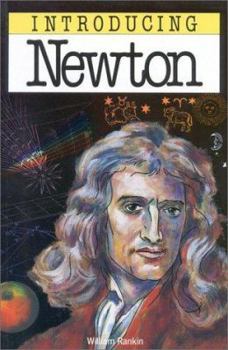Introducing Newton
(Part of the Para principiantes Series and Graphic Guides Series)
Select Format
Select Condition 
Book Overview
A mystic, an alchemist and the greatest scientist genius of his time and ours. This description may be from another edition of this product.
Format:Paperback
Language:English
ISBN:1874166072
ISBN13:9781874166078
Release Date:March 1994
Publisher:Totem Books
Length:176 Pages
Weight:0.45 lbs.
Dimensions:0.5" x 5.8" x 8.3"
Customer Reviews
3 ratings
Inspirational
Published by Thriftbooks.com User , 16 years ago
Obviously this is not where one turns to learn Physics --I however found it "fascinating" to learn about events that I was not aware of--Newtons contemporaries, his failures, poitics of the day, and other events that were happening at the same time frame etc. I have always wanted to someday find time to read Principia--I dont think I have enough training to understand it though--but like most people who watch ER and have no idea of medicine--I guess in a similar voyeristic fashion, I like to read about Physics and Mathematics ! This was an excellent book from that stand point of view--enough to create curiousity to "look for more". I wish I had read it when I was in school. Y. Trakru M.D.
Covers classical physics and Newton. This is an important science book.
Published by Thriftbooks.com User , 17 years ago
This could be the best book in the "Introducing" series. It seems to have the best story, illustrations and topics. Newton is considered smarter then Einstein by many. It reads like an action movie. This is the best place to start on physics however I recommend that you also try "Introducing Mathematics" in this series if you need an maths refresher. Core material: Arithmetic Geometry Pythagoras Squaring the Circle John Bate's The Mysterious of Nature and Art Sundials Fireworks Physis - The nature of a thing is its end Crystalline Spheres Ptolemy and Earth as the centre Copernicus and Sun as the centre Strange motions of Mars Tyco disproves Aristotle fixed stars hypothesis by discovering Supernova Tyco proves a comet in past the moon Kepler covers 900 folio pages of Mars' orbit and discovers it is oval. Kepler creates Copernicus model with oval elliptical orbits. Galileo proves heavy and light bodies fall at same speed Giovanni Battista della Porta develops telescope and Galileo develops it Galileo talks about four moon of Jupiter, Venus phases, Saturns rings, Spiral Galaxy in Andromedia Galileo pushes Copernicus on the Church Galileo publishes resistance, cohesion, motion and acceleration, projectile curves Descartes, matter only effecting matter by contact, everything parts of a machine, doctor is a mechanic, vivisection and animals have no feelings. Euclid's Geometry, Schooten, Oughtred, Wallis and Descartes. Binomial Theorem and infinity Fluxions Calculus Optics White is a mixture of colors Mirror telescope Principia Laws of Motion 1. Every object in a state of uniform motion tends to remain in that state of motion unless an external force is applied to it. 2. The relationship between an object's mass m, its acceleration a, and the applied force F is F = ma. Acceleration and force are vectors (as indicated by their symbols being displayed in slant bold font); in this law the direction of the force vector is the same as the direction of the acceleration vector. 3. III. For every action there is an equal and opposite reaction. Core pages of the discoveries and math is on p.122-129
Excellent, except for ...
Published by Thriftbooks.com User , 25 years ago
The treatment of Galileo could have been more accurate and less crude, but I really like this book. Excellent presentation of both history and ideas in the context of history. I gave a copy to my wife, and also require my students to read it when I teach both elementary and modern physics (relativity).





